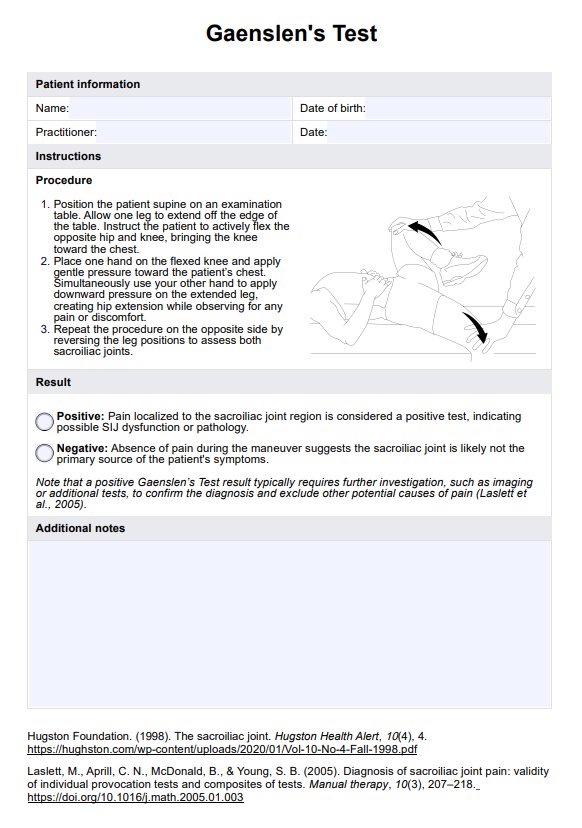Gaenslen’s Test is a valuable tool for identifying sacroiliac (SI) joint pain by reproducing symptoms through targeted stress on the joint. By extending one leg off the table and flexing the other leg toward the chest, the test applies torsional pressure to the SI joints. If pain occurs on the affected side, it is considered a positive result, indicating potential SI joint dysfunction.

Gaenslen Tests
Evaluate your patient's sacroiliac joint function with the Gaenslen's Test. Access a free guide and instructions to perform this test accurately and effectively.
Gaenslen Tests Template
Commonly asked questions
Gaenslen’s Test aims to target the sacroiliac (SI) joints, helping distinguish SI joint dysfunction from hip joint problems. The test stresses the SI joint by applying pressure to the hanging leg and the opposing flexed leg, focusing on the SI joint rather than the hip. If pain is reproduced in the SI joint, it suggests SI dysfunction, while hip joint issues typically require additional tests, such as Patrick’s Test, to provoke symptoms. This differentiation is critical for identifying the source of lower back or pelvic pain and guiding appropriate treatment.
Gaenslen’s Test is a valuable tool for assessing sacroiliac (SI) joint dysfunction, but it is most effective when used alongside other diagnostic methods. Tests like the thigh thrust test, distraction test, or compression test provide additional perspectives on the source of pain, increasing the overall accuracy of diagnosis. In some cases, fluoroscopic guidance or an SIJ block may be used to confirm the involvement of the sacroiliac joint and rule out other causes of lower back pain. Combining these approaches ensures a comprehensive evaluation and helps identify the precise source of the patient’s symptoms.
EHR and practice management software
Get started for free
*No credit card required
Free
$0/usd
Unlimited clients
Telehealth
1GB of storage
Client portal text
Automated billing and online payments











